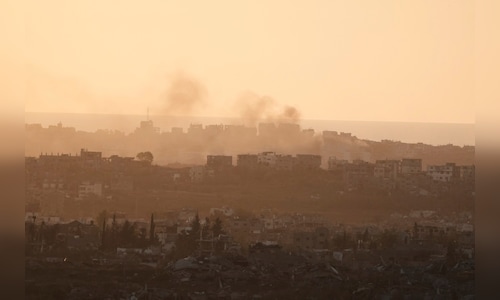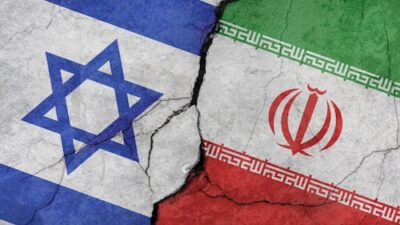Additionally, another 11 Palestinians lost their lives overnight near food distribution centers operated by a humanitarian group supported by both Israel and the U.S. This incident marks the latest in a series of almost daily shootings at these locations since their establishment last month. Witnesses from Palestine claim that Israeli forces fired upon the crowds, while the military asserts that it only discharged warning shots at individuals deemed suspects approaching its personnel.
The military has yet to respond to inquiries concerning the recent shootings. These locations are situated in military zones that are restricted for independent media access.
The Gaza Humanitarian Foundation, a private entity managing these sites, announced their closure on Saturday. However, witnesses indicated that thousands still congregated nearby, desperate for food, as Israel’s blockade and military actions push the territory toward famine conditions.
The al-Awda Hospital reported receiving eight bodies and at least 125 injuries resulting from gunfire near a GHF site in central Gaza.
Also Read: Israel Iran War Live Updates: Fresh wave of retaliatory missiles launched at Israel
Mohamed Abu Hussein, a resident of the densely populated Bureij refugee camp nearby, stated that Israeli forces began shooting at the crowd approximately a kilometer (half-mile) from the food distribution area. He described witnessing several individuals collapse as thousands fled the scene.
In the southern city of Khan Younis, the Nasser Hospital reported 16 fatalities, including five women, due to multiple Israeli strikes late Friday and early Saturday. Additionally, three men were killed near two GHF aid sites in Rafah, a largely abandoned military zone.
According to Israel and the United States, the new system aims to replace a U.N.-managed network that has provided aid throughout the 20-month conflict. They accuse Hamas of divvying up the aid for resale to finance its militant operations.
U.N. representatives refute claims that Hamas has diverted significant aid and express concerns that the new system fails to address the escalating needs. They argue that the new framework has militarized aid, granting Israel the authority to determine access while forcing Palestinians to travel long distances or relocate after repeated displacements.
Despite Israel easing its blockade last month, the U.N. has faced challenges in delivering aid, hindered by military limitations and rising disorder.
The conflict, ignited by Hamas, which is aligned with Iran, began when their fighters launched an assault into southern Israel on October 7, 2023, resulting in approximately 1,200 deaths, predominantly among civilians, and the abduction of 251 individuals. Currently, 53 hostages remain in captivity, with fewer than half believed to be alive after many were released through ceasefire deals or other arrangements.
Israeli counteractions have reportedly claimed over 55,000 Palestinian lives, as per Gaza’s Health Ministry, which notes that women and children comprise more than half of the fatalities but does not distinguish between civilians and fighters in their counts.
The offensive has devastated extensive areas of Gaza and displaced around 90% of the approximately 2 million Palestinians, rendering them nearly wholly dependent on international assistance.
The conflict has engaged Iran and its allies across the region, triggering events leading to Israel’s significant attacks on Iran’s nuclear and military sites on Friday.
___
Magdy reported from Cairo.



